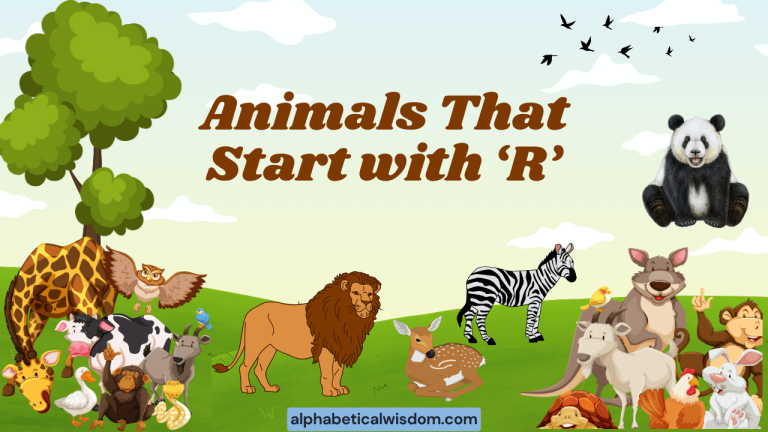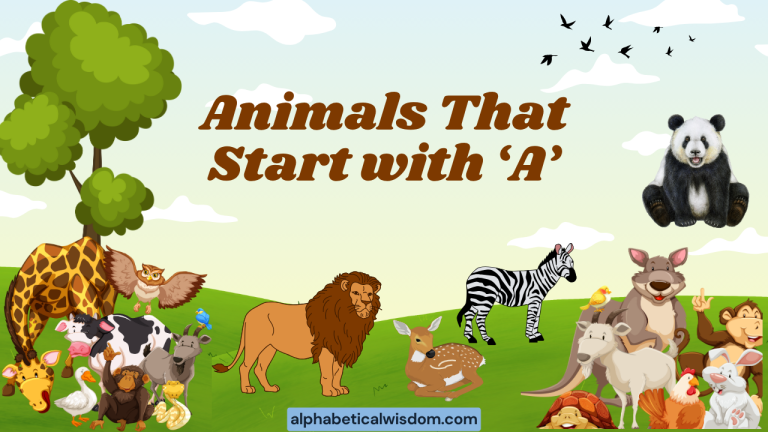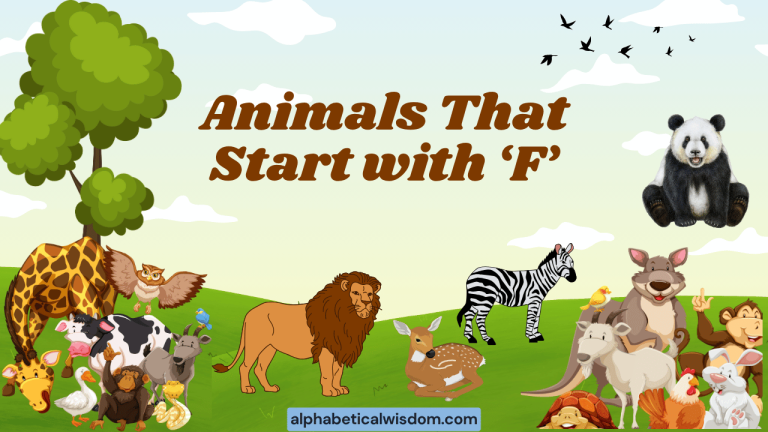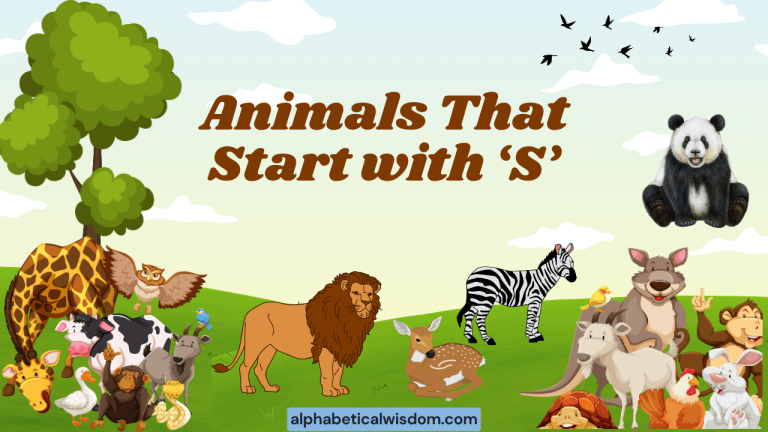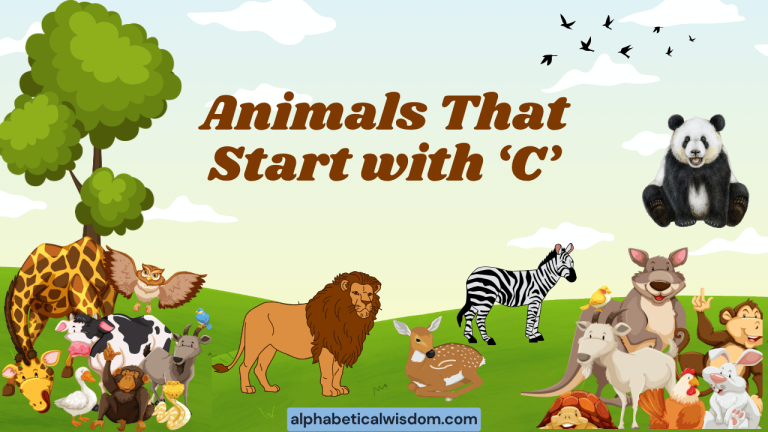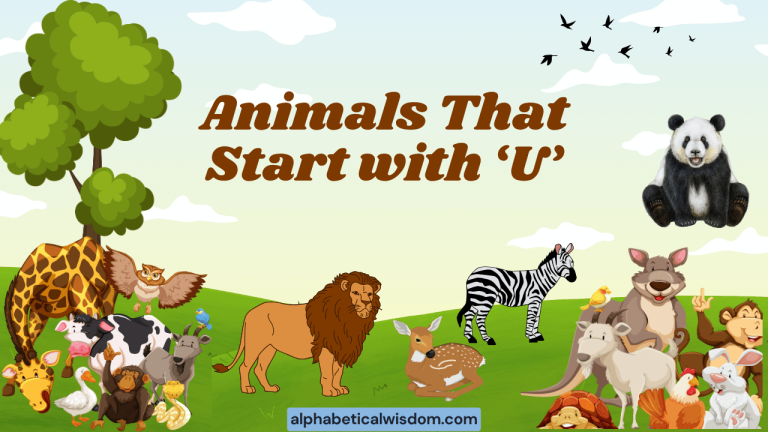Animals Starting with I: A Grammar & Vocabulary Guide
Understanding animal names is not just about expanding your vocabulary; it’s also about grasping the nuances of English grammar. Animal names often appear as subjects or objects in sentences, requiring proper noun and verb agreement.
This guide focuses on animals whose names begin with the letter “I,” providing definitions, examples, and practice exercises to enhance your language skills. Whether you’re an ESL student, a budding writer, or simply curious about animals, this comprehensive article will deepen your understanding of both vocabulary and grammar.
By exploring how these animal names function in sentences, you’ll improve your ability to construct grammatically correct and engaging content. We’ll cover various aspects, including singular and plural forms, proper and common nouns, and how these nouns interact with verbs.
Dive in to discover the fascinating world of animals that start with “I” and elevate your English proficiency!
Table of Contents
- Introduction
- Definition of Animal Names
- Structural Breakdown of Animal Names
- Types and Categories of Animal Names Starting with “I”
- Examples of Animal Names in Sentences
- Usage Rules for Animal Names
- Common Mistakes When Using Animal Names
- Practice Exercises
- Advanced Topics
- FAQ
- Conclusion
Definition of Animal Names
An animal name is a noun that refers to a living creature, typically belonging to the kingdom Animalia. These names can be specific (e.g., “Iberian lynx”) or general (e.g., “insect”).
Understanding animal names is crucial for effective communication and accurate sentence construction. These nouns can function as subjects, objects, complements, or appositives in sentences, each role demanding correct grammatical treatment.
Animal names can be further classified as common or proper nouns. Common nouns refer to general types of animals (e.g., “impala”), while proper nouns refer to specific, named animals (e.g., “Ivan the iguana”).
Proper nouns are always capitalized, whereas common nouns are not, unless they begin a sentence.
Classification of Animal Names
Animal names are nouns, and nouns are words that represent people, places, things, or ideas. In the context of animals, nouns specifically refer to different species, breeds, or individual animals.
Animal names can be singular (referring to one animal) or plural (referring to multiple animals). The plural form of most animal names is created by adding “-s” or “-es” to the singular form.
For example, “iguana” becomes “iguanas,” and “ibex” becomes “ibexes” (although “ibex” is also acceptable as the plural form in some contexts). Some animal names have irregular plural forms, but this is less common with animals starting with “I.” Understanding the singular and plural forms is essential for correct subject-verb agreement.
Function of Animal Names in Sentences
Animal names can perform various functions within a sentence:
- Subject: The iguana sunbathed on the rock.
- Object: The zookeeper fed the ibex.
- Complement: That creature is an insect.
- Appositive: My pet, an Iguana, loves to eat greens.
The function of the animal name determines its role in the sentence’s grammatical structure. As the subject, it performs the action; as the object, it receives the action; as the complement, it renames or describes the subject.
Recognizing these functions helps in constructing grammatically sound sentences.
Contexts in Which Animal Names Are Used
Animal names are used in a wide range of contexts, including:
- Scientific writing (e.g., describing animal behavior or classification)
- Literature (e.g., in stories, poems, and fables)
- Everyday conversation (e.g., talking about pets or wildlife)
- Educational materials (e.g., textbooks, documentaries)
The context often dictates the level of formality and specificity required when using animal names. Scientific contexts may require precise taxonomic names, while casual conversations may use common names.
Being aware of the context ensures accurate and appropriate language use.
Structural Breakdown of Animal Names
The structure of animal names is relatively straightforward. They are nouns, and as such, they follow the typical rules of noun usage in English grammar.
However, certain aspects deserve closer examination, such as singular and plural forms, and the use of articles (a, an, the).
Singular and Plural Forms
Most animal names form their plural by adding “-s” to the singular form. For example, “impala” becomes “impalas.” However, there are exceptions and variations.
Some words, like “ibex,” can be used as both singular and plural, although “ibexes” is also a correct plural form. Understanding these variations is crucial for accurate writing and speaking.
Here are some examples:
- Singular: iguana, insect, impala, ibis, ibex
- Plural: iguanas, insects, impalas, ibises, ibexes (or ibex)
Note that the choice between “ibex” and “ibexes” often depends on the context and style preference. Both are grammatically correct.
Use of Articles (A, An, The)
The use of articles with animal names depends on whether you are referring to a specific animal or animals in general. “A” and “an” are indefinite articles used when referring to a non-specific animal.
“The” is a definite article used when referring to a specific animal or a group of animals.
Examples:
- “A” before consonants: A iguana is a reptile.
- “An” before vowels: An ibis is a wading bird.
- “The” for specific animals: The impala ran across the savanna.
When referring to animals in general, you often omit the article: “Iguanas are popular pets.” However, you can also use “the” to refer to a species in general: “The Iberian lynx is an endangered species.”
Types and Categories of Animal Names Starting with “I”
Animal names starting with “I” can be categorized based on various factors, such as their species, habitat, or other characteristics. Here are some common categories:
Mammals
Mammals are warm-blooded animals that have hair or fur and nurse their young with milk. Examples of mammals starting with “I” include:
- Ibex: A wild goat with long, curved horns.
- Indri: A lemur native to Madagascar, known for its distinctive call.
Birds
Birds are warm-blooded, egg-laying vertebrates characterized by feathers, toothless beaked jaws, and a high metabolic rate. Examples include:
- Ibis: A long-legged wading bird with a down-curved bill.
- Indian Roller: A colorful bird found in the Indian subcontinent.
Reptiles
Reptiles are cold-blooded vertebrates characterized by scales, laying soft-shelled eggs, and breathing with lungs. An example is:
- Iguana: A large lizard native to tropical areas of Central and South America.
Insects
Insects are a class of arthropods that have an exoskeleton, a three-part body (head, thorax, and abdomen), three pairs of jointed legs, compound eyes, and two antennae. Examples include:
- Ichneumon Wasp: A parasitic wasp that lays its eggs in or on other insects.
Fish
Fish are aquatic, gill-bearing animals that lack limbs with digits. While less common, some fish names can start with “I”.
- Icefish: A fish found in the cold waters of the Antarctic.
Examples of Animal Names in Sentences
Here are several examples of animal names starting with “I” used in sentences, categorized by their function.
Animal Names as Subjects
In these sentences, the animal name acts as the subject, performing the action of the verb.
| Sentence | Animal Name | Function |
|---|---|---|
| The iguana basked in the sun. | iguana | Subject |
| An ibis flew over the Nile. | ibis | Subject |
| The ibex climbed the steep mountain. | ibex | Subject |
| The insect buzzed around the flower. | insect | Subject |
| The indri sang its morning song. | indri | Subject |
| The icefish swims in the freezing waters. | icefish | Subject |
| An Indian Roller perched on the branch. | Indian Roller | Subject |
| An Ichneumon Wasp laid its eggs in the caterpillar. | Ichneumon Wasp | Subject |
| The iguana is a popular pet. | iguana | Subject |
| An ibis is commonly found near water. | ibis | Subject |
| The ibex is known for its agility. | ibex | Subject |
| The insect can be both helpful and harmful. | insect | Subject |
| The indri is the largest living lemur. | indri | Subject |
| The icefish has transparent blood. | icefish | Subject |
| The Indian Roller is vibrant in color. | Indian Roller | Subject |
| The Ichneumon Wasp is a parasite. | Ichneumon Wasp | Subject |
| The iguana sheds its skin. | iguana | Subject |
| An ibis searches for food in the mud. | ibis | Subject |
| The ibex adapts to harsh environments. | ibex | Subject |
| The insect plays a role in pollination. | insect | Subject |
| The indri communicates with loud calls. | indri | Subject |
| The icefish survives in extreme cold. | icefish | Subject |
| The Indian Roller is protected by law in India. | Indian Roller | Subject |
| The Ichneumon Wasp is essential for pest control. | Ichneumon Wasp | Subject |
Animal Names as Objects
In these sentences, the animal name acts as the object, receiving the action of the verb.
| Sentence | Animal Name | Function |
|---|---|---|
| The boy watched the iguana. | iguana | Object |
| She spotted an ibis in the distance. | ibis | Object |
| The hunter tracked the ibex. | ibex | Object |
| He swatted the insect away. | insect | Object |
| The tourist photographed the indri. | indri | Object |
| The fisherman caught an icefish. | icefish | Object |
| The ornithologist studied the Indian Roller. | Indian Roller | Object |
| The scientist observed the Ichneumon Wasp. | Ichneumon Wasp | Object |
| The child loves to feed the iguana. | iguana | Object |
| They saw an ibis at the zoo. | ibis | Object |
| The climbers saw an ibex on the mountain. | ibex | Object |
| The gardener sprayed the insect with pesticide. | insect | Object |
| The researcher studied the behavior of the indri. | indri | Object |
| The chef prepared the icefish for dinner. | icefish | Object |
| The photographer captured the Indian Roller in flight. | Indian Roller | Object |
| The biologist examined the Ichneumon Wasp under a microscope. | Ichneumon Wasp | Object |
| The vet treated the sick iguana. | iguana | Object |
| The birdwatcher identified an ibis by its curved beak. | ibis | Object |
| The shepherd protected the ibex from predators. | ibex | Object |
| She noticed an insect crawling on the wall. | insect | Object |
| The documentarian filmed the indri in its natural habitat. | indri | Object |
| The explorer discovered a new species of icefish. | icefish | Object |
| The artist painted a portrait of the Indian Roller. | Indian Roller | Object |
| The entomologist classified the Ichneumon Wasp. | Ichneumon Wasp | Object |
Animal Names as Complements
In these sentences, the animal name acts as a complement, renaming or describing the subject.
| Sentence | Animal Name | Function |
|---|---|---|
| That lizard is an iguana. | iguana | Complement |
| The bird is an ibis. | ibis | Complement |
| That mountain goat is an ibex. | ibex | Complement |
| This tiny creature is an insect. | insect | Complement |
| The lemur is an indri. | indri | Complement |
| That fish is an icefish. | icefish | Complement |
| That colorful bird is an Indian Roller. | Indian Roller | Complement |
| That parasitic wasp is an Ichneumon Wasp. | Ichneumon Wasp | Complement |
| What he saw was an iguana. | iguana | Complement |
| The wading bird is an ibis. | ibis | Complement |
| The agile animal is an ibex. | ibex | Complement |
| The annoying pest is an insect. | insect | Complement |
| The singing primate is an indri. | indri | Complement |
| The transparent fish is an icefish. | icefish | Complement |
| The vibrant bird is an Indian Roller. | Indian Roller | Complement |
| The helpful parasite is an Ichneumon Wasp. | Ichneumon Wasp | Complement |
| A popular reptile pet is an iguana. | iguana | Complement |
| A wading bird with a curved bill is an ibis. | ibis | Complement |
| A mountain goat with long horns is an ibex. | ibex | Complement |
| A six-legged creature is an insect. | insect | Complement |
| The largest living lemur is an indri. | indri | Complement |
| A fish with transparent blood is an icefish. | icefish | Complement |
| A bird protected by law in India is an Indian Roller. | Indian Roller | Complement |
| A parasitic wasp used for pest control is an Ichneumon Wasp. | Ichneumon Wasp | Complement |
Usage Rules for Animal Names
Using animal names correctly involves following standard grammar rules for nouns, including subject-verb agreement, article usage, and pluralization. However, some special cases and exceptions exist, particularly with less common animal names.
Subject-Verb Agreement
The verb in a sentence must agree in number with its subject. If the subject is singular, the verb must be singular; if the subject is plural, the verb must be plural.
Examples:
- Singular: The iguana eats greens.
- Plural: The iguanas eat greens.
- Singular: An ibis flies south for the winter.
- Plural: Ibises fly south for the winter.
Capitalization
Animal names are capitalized only when they are proper nouns (referring to a specific, named animal) or when they begin a sentence. Common nouns referring to general types of animals are not capitalized.
Examples:
- Common noun: The iguana is a reptile.
- Proper noun: Iggy the iguana is my pet.
- Beginning of sentence: Ibises are wading birds.
Exceptions and Special Cases
Some animal names have irregular plural forms or can be used as both singular and plural. Always check a dictionary if you are unsure of the correct form.
For example, “ibex” can be used as both singular and plural, although “ibexes” is also acceptable.
Common Mistakes When Using Animal Names
Several common mistakes occur when using animal names in English. Being aware of these errors can help you avoid them.
Incorrect Subject-Verb Agreement
A common mistake is using a singular verb with a plural subject or vice versa.
| Incorrect | Correct | Explanation |
|---|---|---|
| The iguanas eats greens. | The iguanas eat greens. | The subject “iguanas” is plural, so the verb must be plural (“eat”). |
| An ibis fly south. | An ibis flies south. | The subject “ibis” is singular, so the verb must be singular (“flies”). |
Incorrect Article Usage
Using the wrong article (a, an, the) or omitting it altogether can lead to confusion.
| Incorrect | Correct | Explanation |
|---|---|---|
| I saw iguana in the zoo. | I saw an iguana in the zoo. | “Iguana” is a singular, countable noun, so it requires an article (“an” because it starts with a vowel sound). |
| The ibises are beautiful birds. | Ibises are beautiful birds. | When referring to animals in general, the article is usually omitted. |
Incorrect Pluralization
Using the wrong plural form of an animal name is another common mistake.
| Incorrect | Correct | Explanation |
|---|---|---|
| I saw many ibexes in the mountains. | I saw many ibex in the mountains. | “Ibex” can be used as both singular and plural, though “ibexes” is also correct. |
Practice Exercises
Test your knowledge with these practice exercises. Fill in the blanks with the correct form of the animal name or verb.
Exercise 1: Subject-Verb Agreement
Choose the correct verb form for each sentence.
| Question | Answer |
|---|---|
| The iguana _______ (eat/eats) insects. | eats |
| Ibises _______ (fly/flies) in flocks. | fly |
| An ibex _______ (live/lives) in the mountains. | lives |
| Insects _______ (is/are) important for the ecosystem. | are |
| The indri _______ (sing/sings) in the morning. | sings |
| The icefish _______ (survive/survives) in cold waters. | survives |
| Indian Rollers _______ (display/displays) vibrant colors. | display |
| The Ichneumon Wasp _______ (lay/lays) its eggs in caterpillars. | lays |
| The iguanas _______ (bask/basks) in the sun. | bask |
| An ibis _______ (search/searches) for food. | searches |
Exercise 2: Article Usage
Fill in the blanks with the correct article (a, an, the) or leave it blank if no article is needed.
| Question | Answer |
|---|---|
| I saw _______ iguana at the zoo. | an |
| _______ ibises are wading birds. | (no article) |
| _______ ibex climbed the mountain. | The |
| _______ insect landed on my arm. | An |
| He photographed _______ indri in Madagascar. | the |
| This is _______ icefish, a rare species. | an |
| _______ Indian Roller is a beautiful bird. | The |
| That is _______ Ichneumon Wasp, a parasitic insect. | an |
| _______ iguanas are popular pets. | (no article) |
| She saw _______ ibis near the river. | an |
Exercise 3: Pluralization
Write the plural form of each animal name.
| Singular | Plural |
|---|---|
| iguana | iguanas |
| ibis | ibises |
| ibex | ibex (or ibexes) |
| insect | insects |
| indri | indris |
| icefish | icefish |
| Indian Roller | Indian Rollers |
| Ichneumon Wasp | Ichneumon Wasps |
Advanced Topics
For advanced learners, exploring the etymology of animal names and their cultural significance can provide a deeper understanding of language and its connection to the natural world.
Etymology of Animal Names
The etymology of a word refers to its origin and historical development. Many animal names have roots in Latin or Greek, reflecting the scientific classification system.
For example, “iguana” comes from the Spanish word “iguana,” which is derived from the Arawakan language of the Caribbean. Understanding the etymology of animal names can provide insights into their history and cultural significance.
Cultural Significance of Animal Names
Animals often play significant roles in mythology, folklore, and literature. Their names can carry symbolic meanings and cultural associations.
For example, the ibis was revered in ancient Egypt as a symbol of wisdom and knowledge, associated with the god Thoth. Understanding the cultural significance of animal names can enrich your understanding of literature and cultural traditions.
FAQ
Here are some frequently asked questions about using animal names in English.
- Q: Are animal names common or proper nouns?
A: Animal names can be both common and proper nouns. “Iguana” is a common noun referring to the species, while “Iggy” (the name of a specific iguana) is a proper noun. - Q: Do I need to capitalize animal names?
A: Capitalize animal names when they are proper nouns (names of specific animals) or when they begin a sentence. Otherwise, use lowercase. - Q: What is the plural form of “ibex”?
A: The plural form of “ibex” can be either “ibex” or “ibexes.” Both are grammatically correct, but “ibex” is more commonly used. - Q: When should I use “a” vs. “an” before an animal name?
A: Use “a” before consonant sounds and “an” before vowel sounds. For example, “a iguana” and “an ibis.” - Q: How do I ensure subject-verb agreement with animal names?
A: Make sure the verb agrees in number with the subject. If the subject is singular, use a singular verb; if the subject is plural, use a plural verb. - Q: Why is it important to use correct animal names?
A: Using correct animal names ensures clear and accurate communication, especially in scientific and educational contexts. - Q: Are there any animal names starting with “I” that are commonly misspelled?
A: “Iguana” and “Ichneumon” can be commonly misspelled. Always double-check the spelling, especially in formal writing. - Q: Can animal names be used figuratively in English?
A: Yes, animal names can be used figuratively. For example, someone might be called an “insect” to imply they are insignificant or annoying. - Q: How can I improve my vocabulary of animal names?
A: Read books, watch documentaries, and use online resources to learn more about different animals and their names. - Q: What is the difference between common and scientific names of animals?
A: Common names are everyday names used for animals, while scientific names are standardized, two-part names (genus and species) used by scientists for precise classification.
Conclusion
Mastering animal names starting with “I” involves understanding their definitions, structural elements, and usage rules. By recognizing the functions of these nouns in sentences and avoiding common mistakes, you can enhance your English grammar and vocabulary.
Remember to pay attention to subject-verb agreement, article usage, and pluralization to ensure accuracy in your writing and speaking.
Continue practicing with the exercises provided and explore additional resources to expand your knowledge of animal names and their cultural significance. With consistent effort, you’ll become more confident and proficient in using these words effectively.
Keep exploring and learning!

